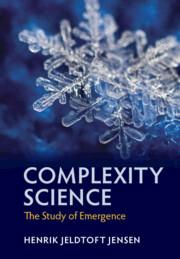As summarised in the New Scientist article [49] there is substantial evidence that neuronal dynamics exhibits emergent
Question:
As summarised in the New Scientist article [49] there is substantial evidence that neuronal dynamics exhibits emergent scale invariance, see Sec. 2.1 and Project 3 in Chap. 2. Some of the evidence comes from the shape of the probability distribution describing bursts, avalanches, of neuronal activity being approximately power law, recall Fig. 3.5. Observations in [56] and [433] find such evidence. The present project studies how far simple models are able to capture these emergent aspects of the immensely complex web of interacting neurones.We will look at a number of papers and use skim reading to get an overview
(a) Describe in bullet points the spatial structure and dynamics of the model used in [178].
(b) Summarise your evaluation of how well the model captures the experimental observations.
Although the model used in [178] captures some aspects of neuronal dynamics, it does neglect the fact that the brain contains both excitatory and inhibitory neurones.
This challenge is taken up in a series of papers by de Arcangelis and collaborators.
(c) Describe in bullet points the spatial structure and dynamics of the model used in [101].
(d) What are the most important differences between the model studied in
(a) and the one studied in (c)?
In Chap. 4 we introduce the third O’Keeffe–Einstein proposition:
With this statement in mind, it is important to study how wide a range of phenomenology a given model approach is able to capture. After all, the brain does more than just support intermittent bursts of activity. Read the abstract, summary and skim read rapidly through the following papers: [267, 268, 294, 295, 373].
(e) Make a list of the emergent features of brain dynamics recorded in the above list of papers.
(f) Would you consider the model introduced in
(b) as able to capture aspects of consciousness?
Step by Step Answer:

Complexity Science The Study Of Emergence
ISBN: 9781108834766
1st Edition
Authors: Henrik Jeldtoft Jensen






